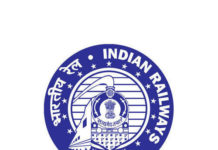New Delhi (NVI): Paddy farming in India, the largest rice producer, is now facing low productivity, water and labour scarcity, lack of innovations and a low cost-benefit ratio, according to some experts.
A large part of India is dominated by water and labour intensive paddy farming. As water becomes an even more scarce resource with each passing day, there is an urgent need for farming practices to change, according to Ritwik Bahuguna, Founder of Roots Foundation and Partner, Wazir Advisors.
According to Central Groundwater Board, the water table is receding in 80% of Punjab and 70% of Haryana. The average depletion rate per year is 30-40 cm and goes up to 1 meter at some places.
“Low productivity, water & labour scarcity, lack of innovations, and low cost-benefit ratio ail paddy farming in the country,” Bahuguna said.
Paddy occupies about 24 percent of the gross cropped area of the country. India ranks second in production (99.5 MT), next only to China.
By adoption of DSR and improved weed control practices, we can increase rice yields by 10 % which saving substantial water resources,” Bahuguna said adding, “Training farmers in innovative and sustainable technologies and techniques is the key for Indian agriculture going forward.”
In DSR, the pre-germinated seeds are directly drilled into the field by a tractor-powered machine. There is no nursery preparation or transplantation involved in this method. Farmers have to only level their land and give one pre-sowing irrigation.
Following tremendous success in Punjab, Haryana, Karnataka and other states in motivating and training paddy farmers to adopt a more judicious method of rice cultivation – Direct Seeded Rice (DSR), Roots Foundation – a voluntary organization working in the agriculture and allied sectors, plans to train another 20-25 lakh farmers in the DSR technique by 2022 to significantly reduce water consumption in rice cultivation.
This technique reduces water usage in paddy by 35-40 percent and emissions of CH4 and Carbon by 20-30 percent.
Paddy transplantation is both time and water consuming. Direct Seeded Rice (DSR) is the most effective technique in such regions.
“We are the largest implementation agency for DSR in Punjab and Haryana. More than 10 lakh farmers trained across India. The main challenge is to reduce the yield losses by weeds. Technological innovations and interventions are the way out and DSR can reduce water consumption by 30 percent. It requires less labour compared to conventional transplanting. Finally, the technique reduces the cost of paddy production between Rs 5000-11,000 per acre,” said the founder.
These statistics have been validated by authorities in the field such as Punjab Agriculture University.
The Foundation and Wazir Advisors estimate that even if 25% of the Indian rice cultivation can be shifted to direct seeding, water-saving will be equal to the total water consumed by the Indian Industry.






